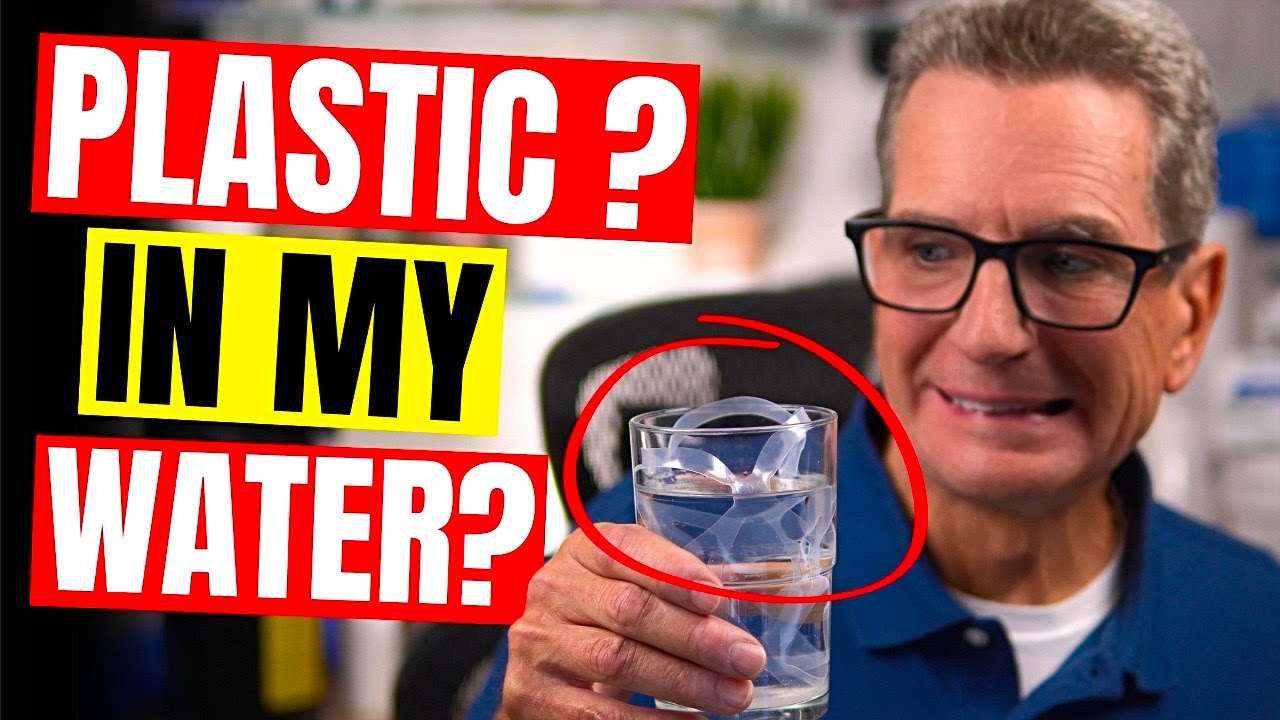
At Water eStore, we strive to provide you with valuable information about the quality of your drinking water so you feel confident in making the best decisions for you and your family.
In today's blog, Gary the Water Guy will shed light on an important concern: microplastics in your family's water. With increasing evidence pointing towards the presence of these tiny plastic particles in both tap and bottled water, it's crucial to understand how they enter our water sources, the potential health risks they pose and, most importantly, what steps you can take to safeguard your loved ones from consuming water contaminated with microplastics.
Join me as I simplify water filtration and empower you to conquer the challenges of ensuring clean, healthy water for your family.

A PLASTIC EPIDEMIC
Americans use 2.5 million plastic bottles every hour. Every week, 10 billion plastic bags are used worldwide. Eight million metric tons of discarded plastic makes its way to the oceans each year and let’s not forget what ends up in our lakes, streams and rivers.
Plastic waste enters both land and water sources through littering, poor waste management, stormwater runoff, fishing vessels, cargo and cruise ships and more. Many plastics float, so countless plastic items of all shapes and sizes make their journey downstream, eventually making their way to the oceans.
WHAT ARE MICROPLASTICS?
Microplastics are generally characterized as water-insoluble, solid polymer particles that are ≤5 mm in size, or about the size of a pencil eraser and smaller. They contaminate water as they break down over time. Certain foods like fruits and vegetables, beer, fish, and bottled water all contain microplastics. Most plastics do not biodegrade, they just break down into smaller pieces.

In fact, Microplastics have been found in every ecosystem on the planet from the Antarctic tundra to tropical coral reefs and even in rainwater. So basically, Seafood eats the microplastics and we eat the seafood, but we can’t secrete those microplastics easily.
Microplastics can cause considerable health concerns. In addition to their physical effects on the digestive system, microplastics can cause chemical toxicity, which involves the absorption and accumulation of environmental toxins such as heavy metals and polycyclic aromatic hydrocarbons.
These toxic substances can enter the body through the gastrointestinal tract when microplastics are ingested orally, leading to various gastrointestinal symptoms including nausea, vomiting, and abdominal pain.16
ARE THERE MICROPLASTICS IN YOUR WATER?
Studies show that 94% of the drinking water samples collected in the United States contained microplastics. The best way to tell for sure if you have microplastics in your water however is with a water test. Since these contaminants are so small, they are invisible to the naked eye.
You can have your water tested for microplastics here:
But keep in mind that just because you don’t have microplastics today doesn’t mean you won’t have them tomorrow.

WHAT ABOUT BOTTLED WATER?
Can you protect your family by buying bottled water from exotic places like Fiji or the French Alps? Nope!
If those waters are bottled in plastic bottles the amount of Microplastics in bottled water actually increases the longer the water sits in and leaches plastic from the plastic water bottle. And the glass bottles also leach plastics from the cap.
When it comes to bottled water, some of the microplastic contamination is likely coming from the water source, but a larger contribution might be coming from the packaging itself.
I don’t know about you, but I will make sure my family drinks water that has had the microplastics removed!
WATER TREATMENT SOLUTIONS
Both the EPA and WHO says that more data are needed to confirm the contamination sources and extent of contamination by microplastics in our

drinking water but agree that advanced treatment using membranes (Reverse Osmosis) would be expected to achieve 100% removal of microplastics.
A Reverse Osmosis drinking water system, like this one, will remove microplastics finer than the eye can see — and a whole lot of other contaminants from your drinking water!
>> Get a Reverse Osmosis drinking water system for your family here!
Thanks for joining me on this eye-opening journey as we uncovered the hidden truths about microplastics lurking in our water together. If you have questions about the best water treatment solution for your family — at home, work or the cottage — reach out to us today. We'd be happy to recommend an optimal solution for your unique water treatment needs!

